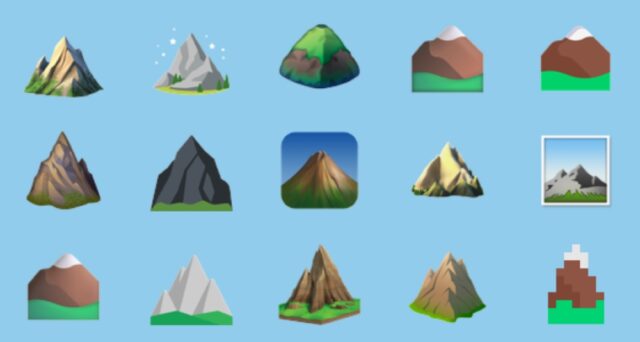Definition:
A “mountain” is a large natural elevation of the earth’s surface that rises steeply from the surrounding level. Mountains are formed through geological processes such as plate tectonics, volcanic activity, or erosion over long periods of time.
Etymology:
The word “mountain” comes from the Middle English “mountain,” which derives from the Old French “montaigne,” and further from the Latin “montanea,” the feminine form of “montaneus,” which means “of a mountain.”
Description:
Mountains are classified based on their formation processes, including fold mountains, fault-block mountains, volcanic mountains, and dome mountains. They vary greatly in height, climate, and ecosystems. Some well-known mountains include Earth’s highest mountain, Mount Everest; the world’s tallest freestanding mountain, Kilimanjaro; a solitary volcanic peak in Africa; and the Rocky Mountains, a major mountain range in North America. Mountains are important ecosystems that host a diversity of plants and animals, and often act as barriers to weather phenomena.
Symbolism:
Mountains symbolize hierarchy due to their characteristic triangular shape, especially when crowned with snow, which can resemble the Illuminati symbol. This can easily be seen in the mountain emojis. Mountains are rugged structures that require effort to climb, and the higher one climbs, the greater the overview one gains. At the same time, mountains symbolize a pathway to heaven.

iOS mountain emojis.
Mountains symbolize deception much like the Illuminati symbol, as clearly depicted in the film “Smallfoot” (2018), where the mountain is a central element in the story. The movie follows a young Yeti named Migo, who lives in an isolated village high up in the mountains, where they believe the mountain comprises the entire world. These mountains are shielded by a thick layer of clouds that hide the village from the human world below. The explanation they’ve been given about their existence is that their world fell out of the butt of the great sky yak, that the mountain floats on clouds held up by giant mammoths, and that they must feed ice to the mammoths so they don’t overheat. In reality, when they feed the machine with ice, the steam/clouds are produced to conceal them from seeing the world below. When Migo has an unexpected encounter with a human pilot who crashes into the mountains, he begins to doubt everything he’s been told and sets out to discover the truth about “Smallfoot.” This leads him to expose the entire conspiracy that upholds the meaningless labor machine. Click to watch the video clip.

A mountain is often used to symbolize a challenge, as seen in the lyrics of Hannah Montana – The Climb:
There’s always gonna be another mountain.
I’m always gonna wanna make it move.
Always gonna be an uphill battle.
Sometimes I’m gonna have to lose.
Ain’t about how fast I get there.
Ain’t about what’s waiting on the other side.
It’s the climb.
Articles:
Cosmic Mountain
Definition: A “cosmic mountain” is a symbolic and mythological representation of a sacred or significant mountain that connects the heavens and the earth. It is seen as a central axis…
Three (3)
Definition: The number “3” is the third natural number following “2” and preceding “4.” It represents a quantity of three units or objects. Etymology: The etymology of the number “3”…
Volcano
Definition: A “volcano” is a geological formation, typically a mountain, where molten rock (magma), ash, and gases from the Earth’s interior erupt through the Earth’s crust. Etymology: The word “volcano”…
Wedding Cake
Definition: A “wedding cake” is a special cake served at a wedding reception following the wedding ceremony. It is often multi-tiered, elaborately decorated, and designed to reflect the couple’s tastes…
Religion:
Mountains frequently appear in the Bible as symbols of revelation sites and divine presence. Notable examples include Mount Sinai, where Moses received the Ten Commandments (Exodus 19), and the Mount of Olives, a ridge east of Jerusalem in Israel. Its Hebrew name, Har HaZeitim, means “mountain of olives.” In the Old Testament, the Mount of Olives is often referred to as a place of religious and prophetic significance. It is mentioned in connection with King David, who fled up the mountain during Absalom’s rebellion (2 Samuel 15:30). It is also mentioned in the prophecies of Zechariah, speaking of how the Lord will stand on the Mount of Olives and split it in two, and how the mountain will become a symbolic place for God’s kingdom (Zechariah 14:4). In the New Testament, the Mount of Olives is first mentioned in connection with Jesus’ final days. It is the place where Jesus often went to pray and teach (Luke 22:39). It is also the place where he left his disciples and was taken up to heaven after his resurrection (Acts 1:9-12).
In the Book of Mormon, 1 Nephi, chapter 11 describes Nephi’s spiritual vision where he is taken up to a mountain, and there he sees a series of spiritual symbols and visions revealed to him by God.
In the Quran, it is claimed that mountains are stabilizers of the earth and prevent its shaking. In Quran 16:15, it states: “And He has cast into the earth firmly set mountains, lest it shift with you, and [made] rivers and roads, that you may be guided,” This quote is typical of the Quran, which often emphasizes that the world exists for humankind. However, this quote does not align with reality, as earthquakes are actual occurrences.
In Vedic scriptures in Hinduism, mountains are considered the abodes of the gods. For example, Mount Meru is regarded as the center of all physical, metaphysical, and spiritual universes.
In Norse mythology, according to the Younger Edda, mountains are homes to giants and other mythological beings, symbolizing both danger and divine grandeur.


